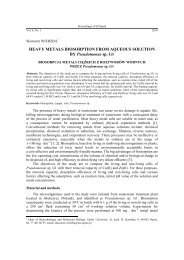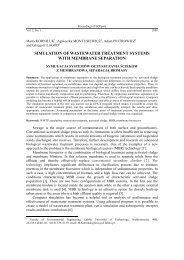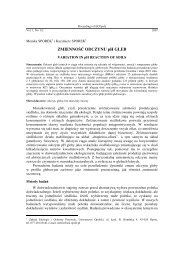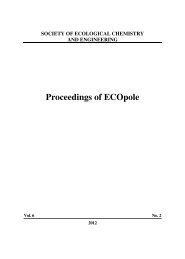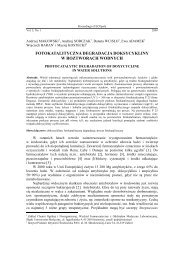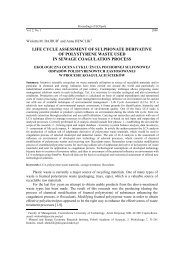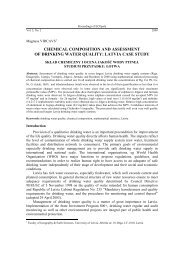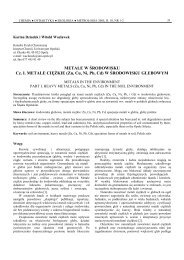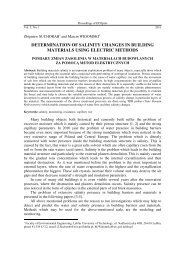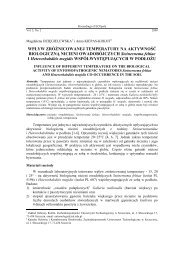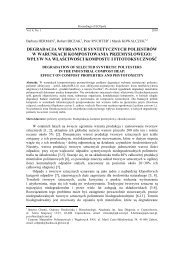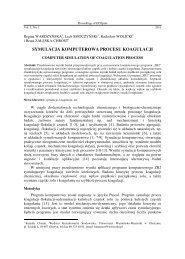Download part 3 of the issue - Uniwersytet Opolski
Download part 3 of the issue - Uniwersytet Opolski
Download part 3 of the issue - Uniwersytet Opolski
Create successful ePaper yourself
Turn your PDF publications into a flip-book with our unique Google optimized e-Paper software.
340<br />
Izabela Płonka, Barbara Pieczykolan, Magdalena Amalio-Kosel i Krzyszt<strong>of</strong> Loska<br />
0,4693÷1,4247 g/kg s.m. oraz miedź 0,0195÷0,1152 g/kg s.m. (najwyższe stężenie<br />
odnotowano w marcu). Ponadto w osadach z ZPW II od kwietnia obserwowano wzrost<br />
stężenia ołowiu od 0,094 g/kg s.m., które osiągnęło największą wartość we wrześniu -<br />
0,1575 g/kg s.m.<br />
Rys. 2. Zmiany zawartości rtęci i cynku w osadach pokoagulacyjnych z ZPW I<br />
Fig. 2. Changes in <strong>the</strong> contents <strong>of</strong> mercury, zinc in post-coagulation sludge from <strong>the</strong> WTP I<br />
Rys. 3. Zmiany zawartości niklu, miedzi, chromu, kadmu i ołowiu w osadach pokoagulacyjnych z ZPW II<br />
Fig. 3. Changes in <strong>the</strong> contents <strong>of</strong> nickel, mercury, chromium, cadmium and lead in post-coagulation sludge from<br />
<strong>the</strong> WTP II



